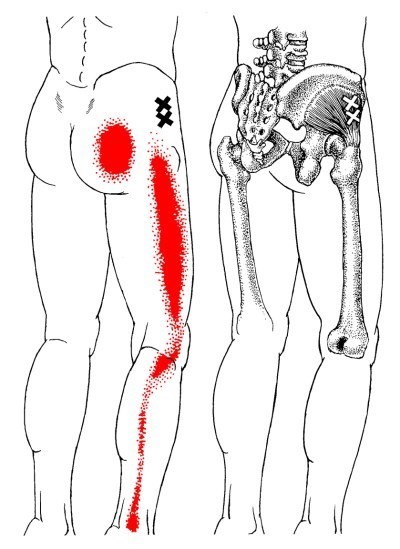Side-atica … Not to be confused with Sciatica
Do you experience pain in your hip or buttocks that travels down the side of your leg? So often in the clinic, I have patients come in with this type of pain presentation, and somewhere on the intake form or during initial conversation, the word “sciatica” pops up. “Oh Doc, my sciatic nerve is flared up again” or “I have sciatica”. Although this may be true for some patients, this is a very common misconception for many people experiencing similar pain. Interestingly enough, just because pain is travelling down a leg, it isn’t necessarily originating from your sciatic nerve.
This, my friends, is great news!
Sciatica is often labeled and diagnosed in anyone who has pain in the buttocks that travels into the leg. Classic sciatica stems from a problem in the lower back and spine that compresses the nerve roots of the sciatic nerve. This causes pain that shoots down the leg in a very sharp and intense pattern (numbness and tingling is sometimes also present). Herniated discs, advanced arthritis, and the piriformis muscle can all cause classic sciatica. There are other structures, however, that can also mimic sciatica and cause similar pain in the buttocks/hip and down the thigh and leg. Two of the most common culprits are the Sacroiliac Joint (SI Joint) and the Gluteus Minimus muscle. This blog highlights the latter … the pesky muscle. If the gluteus minimus is responsible for causing the pain, it is instead termed “side-atica”.
So, I may not have “sciatica” you ask?
That’s correct! The gluteus minimus muscle, a small muscle on the outside of your hip that is buried by the larger brotherly gluteus medius muscle, may be causing your “sciatica” type symptoms. This muscle is responsible for pelvic stability as well as ensuring other proper hip motion. Overuse, muscle weakness/imbalances, or poor pelvic stability can lead to trigger points, also known as “knots” in the gluteus minimus muscle. This can lead to referred pain into the hip, buttock, thigh and even into the lower leg.
Properly diagnosing “side-atica” is a key component to ensuring a full recovery! On examination, the muscle is often found to be weak, pain is described as dull and overall poorly localized, and palpation of the muscle itself is normally quite uncomfortable and may exacerbate the symptoms down the side of your leg.
The good news? Side-atica normally responds much quicker to therapy than classic full-blown sciatica. Treatment in the clinic for this condition involves a combination of soft tissue therapy (trigger point therapy), acupuncture, spinal adjustments, and some simple homework consisting of muscle stretching and strengthening exercises.
Do yourself a favor! Don’t let such a small muscle become such a large pain in your bum! Call the clinic today!!

